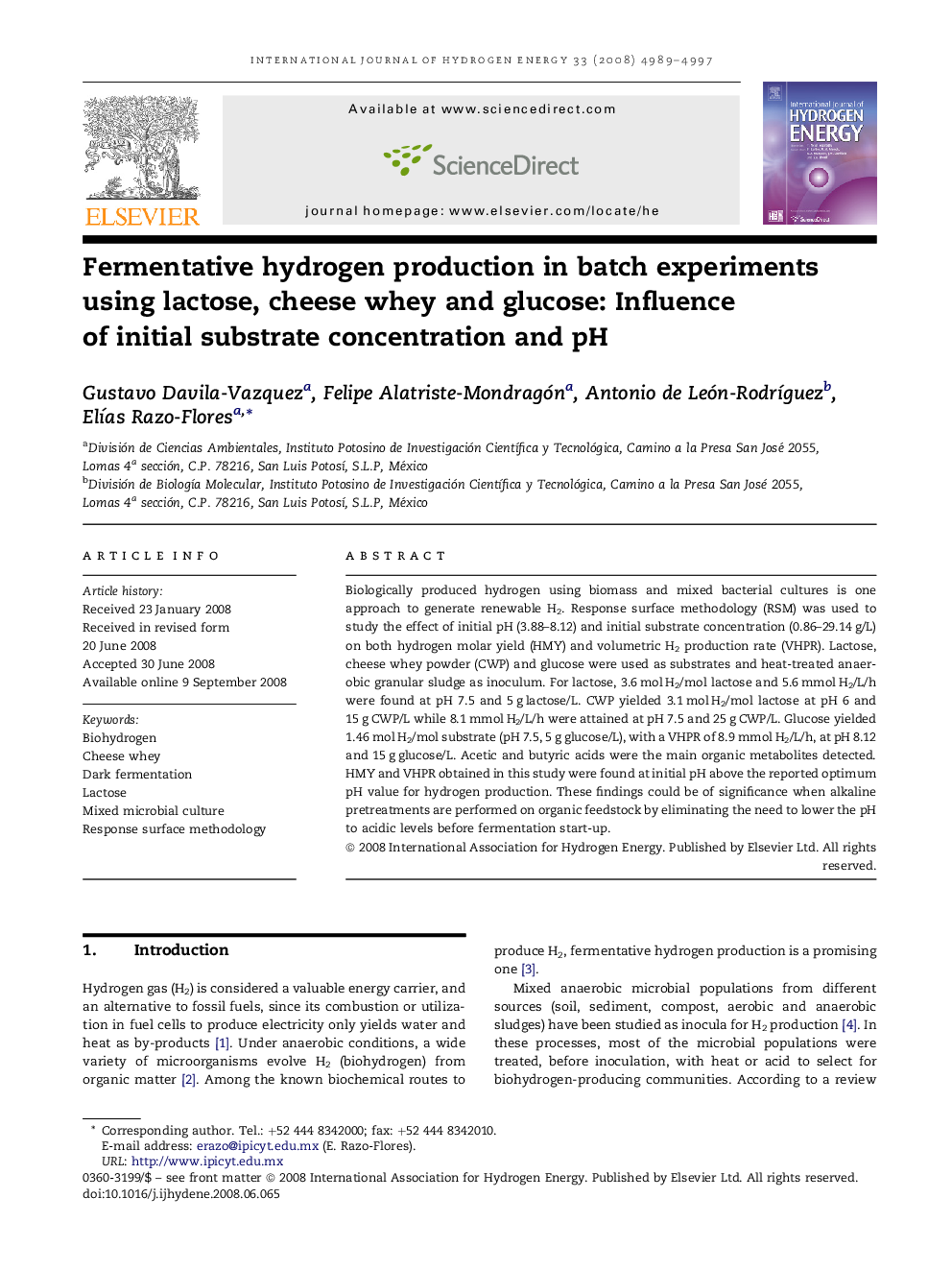| Article ID | Journal | Published Year | Pages | File Type |
|---|---|---|---|---|
| 1281410 | International Journal of Hydrogen Energy | 2008 | 9 Pages |
Biologically produced hydrogen using biomass and mixed bacterial cultures is one approach to generate renewable H2. Response surface methodology (RSM) was used to study the effect of initial pH (3.88–8.12) and initial substrate concentration (0.86–29.14 g/L) on both hydrogen molar yield (HMY) and volumetric H2 production rate (VHPR). Lactose, cheese whey powder (CWP) and glucose were used as substrates and heat-treated anaerobic granular sludge as inoculum. For lactose, 3.6 mol H2/mol lactose and 5.6 mmol H2/L/h were found at pH 7.5 and 5 g lactose/L. CWP yielded 3.1 mol H2/mol lactose at pH 6 and 15 g CWP/L while 8.1 mmol H2/L/h were attained at pH 7.5 and 25 g CWP/L. Glucose yielded 1.46 mol H2/mol substrate (pH 7.5, 5 g glucose/L), with a VHPR of 8.9 mmol H2/L/h, at pH 8.12 and 15 g glucose/L. Acetic and butyric acids were the main organic metabolites detected. HMY and VHPR obtained in this study were found at initial pH above the reported optimum pH value for hydrogen production. These findings could be of significance when alkaline pretreatments are performed on organic feedstock by eliminating the need to lower the pH to acidic levels before fermentation start-up.
